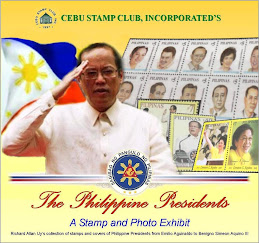Today in Philippine History (Philatelic Edition):
DECEMBER 1, 1870
Brigadier General Jose Candido Alejandrino y Magdangal (December 1, 1870 - June 1, 1951), an Ilustrado and a general during the Philippine Revolution, the Philippine-American War, and a senator, was born on December 1, 1870 in Binondo, Manila.
He studied at the Ateneo Municipal de Manila and finished his Bachelor of Arts degree at the University of Santo Tomas.
He continued his studies in Spain and earned a Chemical Engineering degree at the University of Ghent in Belgium. He became a member of the Propaganda Movement and was part of the editorial staff of La Solidaridad.
Alejandrino was instrumental in bringing Jose Rizal’s El Filibusterismo to the printing press.
He was active in acquiring weapons for the revolutionaries and was with Emilio Aguinaldo, who accepted to go on exile in Hong Kong in accordance with the Pact of Biak-na-Bato signed on December 14, 1897.
Alejandrino served in the Malolos Congress in 1898 and was one of the committee members who drafted the Malolos Constitution. Aguinaldo offered him a post as Director of Agriculture, Industry and Commerce and was later designated as Chief of Engineers of the army.
He directed the building of trenches in Bulacan and Caloocan. Together with General Antonio Luna, they suggested to Aguinaldo to build a defensive line to delay the advancement of American troops in capturing the railway but was not implemented because of Luna’s death in the hands of Aguinaldo’s men.
After Aguinaldo’s capture and surrender in 1901, Alejandrino married Adela, the daughter of Telesforo Chiudan. Governor-General Leonard Wood made him a senator of the Twelfth Senatorial District of the Philippines.
(Design, concept, stamps and research: Richard Allan B. Uy) All rights reserved
Photo credit: en wikipedia com























